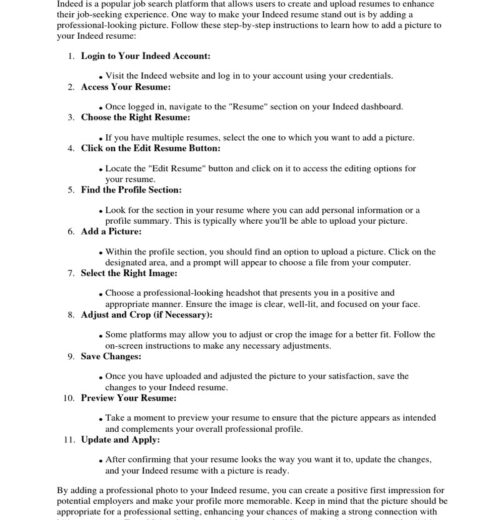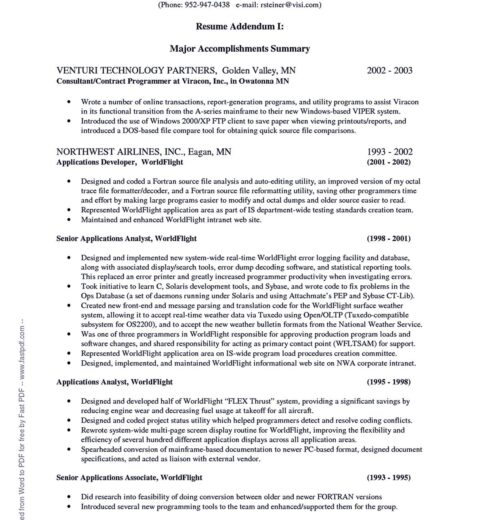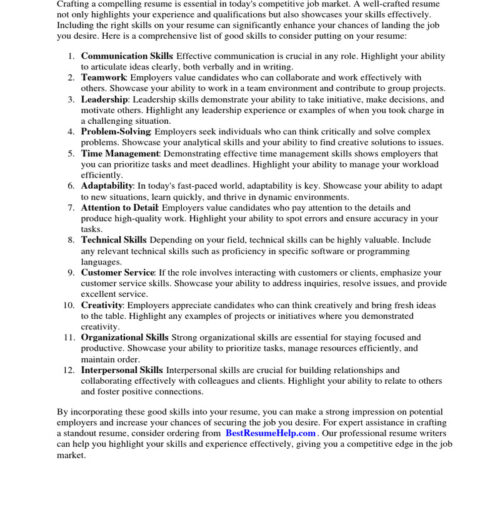Creating a resume that effectively communicates your qualifications while capturing the attention of potential employers is paramount in securing a job. This comprehensive guide delves into the intricate elements necessary for crafting a resume that not only stands out but also addresses key buyer concerns prevalent in today’s competitive job market.
Understanding the Purpose of a Resume
A resume functions as a marketing tool designed to succinctly showcase an individual’s skills, experiences, and achievements. It is your first point of contact with a prospective employer, making it imperative that this document not only reflects your competencies but also resonates with the needs of the hiring manager.
Identifying Target Audience and Job Description
The foundation of a successful resume begins with a deep understanding of the target audience—the employers who will scrutinize your submission. Thoroughly analyze the job description for the position you are aspiring to attain. Identify key skills, qualifications, and experiences that are emphasized. Tailoring your resume to align with these requirements demonstrates a proactive approach and commitment to the role.
Choosing the Right Format
There are several resume formats available, each with its unique advantages. The three most popular formats are chronological, functional, and combination resumes.
- Chronological Resume: This is the most conventional format, listing work experience in reverse chronological order. Ideal for applicants with a consistent work history.
- Functional Resume: This format focuses on skills and experiences rather than chronological work history. It is beneficial for those with gaps in employment or changing careers.
- Combination Resume: As the name suggests, this method amalgamates elements of both chronological and functional formats, allowing for a comprehensive presentation of skills alongside a traditional work history narrative.
Selecting a structure that caters to your unique employment circumstances will enhance the coherence and appeal of your resume. If you are unsure which format works best, consider seeking feedback from career services or utilizing professional resume-writing resources.
Crafting an Engaging Summary Statement
Your resume should begin with an engaging summary statement—an introduction that encapsulates your professional persona. This concise paragraph should highlight your core competencies, years of experience, and what you can contribute to the potential employer. Utilize action-oriented language that conveys enthusiasm and ambition. Tailoring this summary to reflect the job description can further bolster its impact.
Highlighting Relevant Skills and Experience
Once the summary statement is perfected, focus on the skills and experiences most relevant to the position applied for. This section should be rich with keywords aligned with the job description, demonstrating how your qualifications meet the specific needs of the employer.
Utilize bullet points to facilitate readability, ensuring that each skill listed is accompanied by quantifiable achievements. For example, rather than stating, “Managed a team,” consider a more dynamic phrasing: “Successfully led a cross-functional team of 10, resulting in a 25% increase in project efficiency.”
Incorporating Education and Certifications
Following your professional experience, include your educational background and any relevant certifications. This information should be listed in reverse chronological order, emphasizing qualifications that are pertinent to the role. If you hold advanced degrees or specialized certifications, highlight them prominently, as they can significantly enhance your candidacy.
Utilizing the Power of Keywords
In the age of Applicant Tracking Systems (ATS), your resume must be rich in keywords pertinent to the job. These systems are designed to filter resumes based on keyword presence, often eliminating those that do not match. Therefore, thorough research of industry terminology and common phrases derived from job postings should be incorporated organically throughout your resume.
Formatting and Aesthetic Considerations
The visual appeal of your resume is equally as crucial as its content. A cluttered or unorganized layout can deter hiring managers from considering your qualifications. Aim for a clean, professional design that incorporates ample white space, a readable font, and logically organized sections. Subtle color accents can enhance the aesthetic without overwhelming the viewer.
Proofreading and Seeking External Feedback
Before submission, undertake meticulous proofreading to eliminate spelling or grammatical errors that can reflect poorly on your candidacy. Ask peers or mentors to review your resume; an external perspective can often illuminate areas needing improvement that may have been overlooked.
Conclusion
In conclusion, creating a resume that effectively markets your qualifications requires careful consideration of format, content, and presentation. By identifying the target audience, tailoring your qualifications to the job description, and employing strategic formatting coupled with an engaging narrative, you position yourself as a standout candidate in a saturated job market. Remember, the goal is not merely to list your experiences but to passionately convey your potential to contribute meaningfully to the employer’s objectives. This is the crux of a resume that gets you hired.




